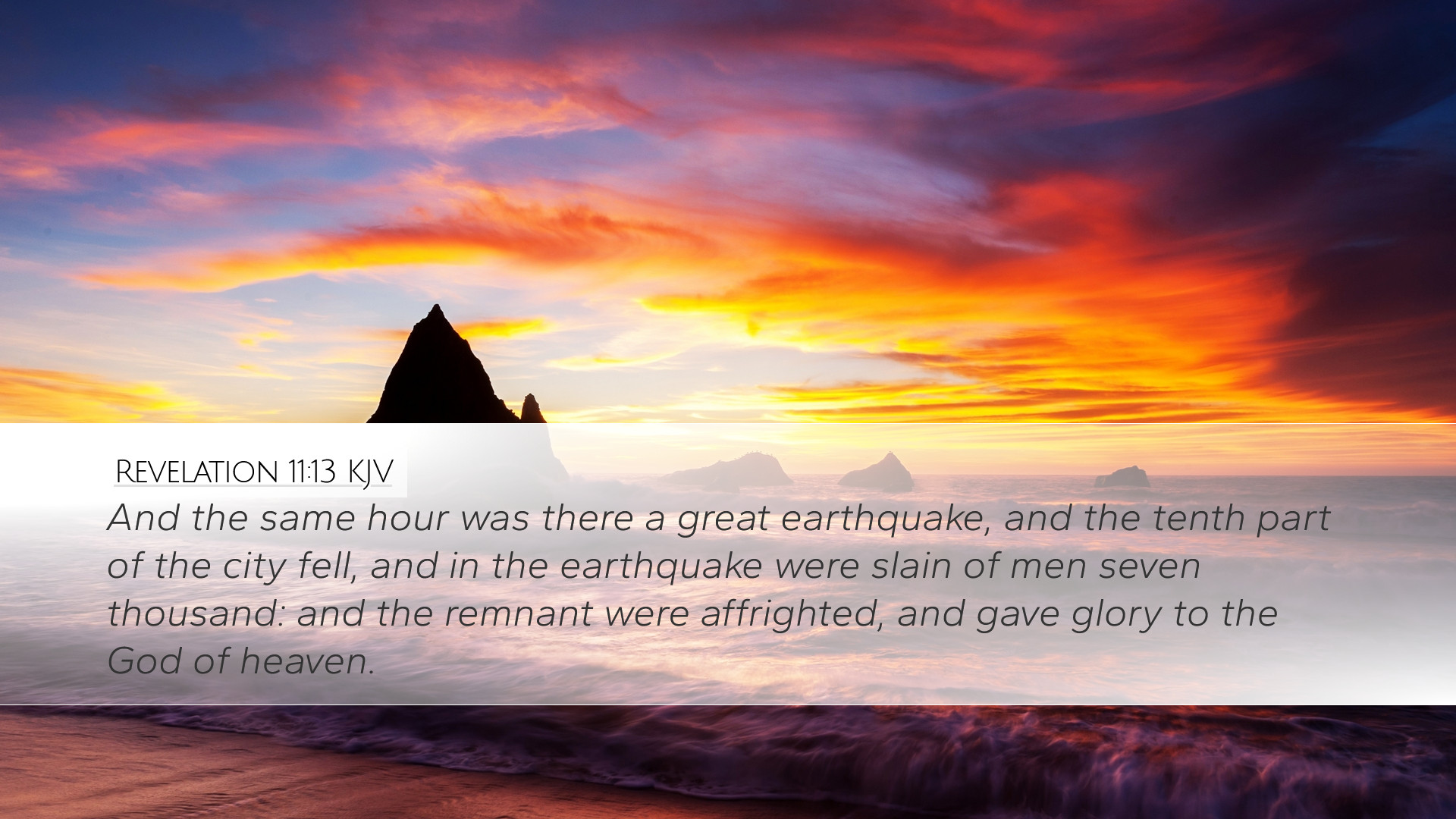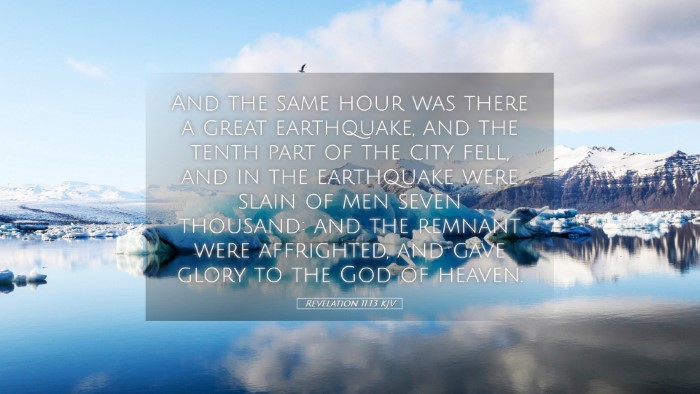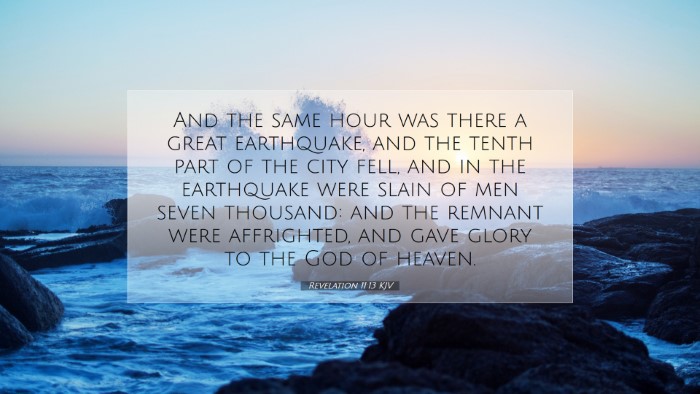Commentary on Revelation 11:13
Verse Context: Revelation 11:13 reads, "And at that hour there was a great earthquake, and the tenth part of the city fell, and in the earthquake were slain of men seven thousand: and the remnant were affrighted, and gave glory to the God of heaven." This passage comes in the book of Revelation, which is characterized by vivid imagery and prophetic symbolism, often interpreted through various theological lenses.
1. Significance of the Earthquake
This verse opens with the pronouncement of a great earthquake, symbolically indicative of a divine intervention in human affairs. The significance of an earthquake in biblical literature represents upheaval, judgment, and God's presence. As Matthew Henry notes, "Earthquakes have been often the heralds of the divine displeasure." They signify moments of profound transformation and serve as reminders of human frailty before the Almighty.
2. The Fall of the City
Revelation 11:13 mentions that "the tenth part of the city fell." Here, the city symbolizes a larger system or structure that opposes God. Adam Clarke elaborates, explaining that "the city" refers not merely to a physical location but to a representation of societal corruption and moral decay. This collapse is a figurative representation of God's judgment against the nations, reflecting their rebellion against divine authority.
3. The Casualty Count: Seven Thousand Slain
The text states that seven thousand men were slain during this devastation. Albert Barnes interprets the number seven as a biblical symbol of completeness or perfection. Thus, this figure may suggest an intended completeness in divine judgment as opposed to a literal numerical account. Such events draw attention to God’s sovereign hand at work, indicating that His judgment is both righteous and severe.
4. The Response of the Remnant
The “remnant” refers to those who survive the calamity, and their reaction is crucial. The text declares, "the remnant were affrighted, and gave glory to the God of heaven." This moment captures the essence of reverent acknowledgment of God's power and authority. Matthew Henry points out, "They were terrified; fear is the first step toward true repentance." This fear leads them to glorify God, indicating a turnaround from rebellion to worship.
5. Historical and Theological Interpretations
- Historical Lens: Some scholars argue this verse reflects specific historical events such as the destruction of Jerusalem or significant judgments upon various nations throughout history.
- Theological Themes: Themes of God's judgment, human accountability, and the sovereignty of God are inherent in the passage. Albert Barnes emphasizes that God’s power does not merely affect isolated incidents but is a testament to His overarching authority over world events.
- Eschatological Perspective: Many theologians interpret this event within the framework of eschatology, signifying the events leading up to the end times and Christ's return.
6. Lessons for Contemporary Believers
For pastors, students, and theologians, Revelation 11:13 serves as a dual reminder: a warning against complacency in the face of worldly corruption and a call to genuine worship. Believers are to recognize God's presence in upheaval and chaos, assuring them that even amidst devastation, His hand is guiding events according to His sovereign will.
7. Concluding Thoughts
In summary, Revelation 11:13 encapsulates key themes that resonate throughout Scriptural narratives. It conveys God's judgment and sovereignty while also encouraging the recognition of His authority during tumultuous times. For those engaged in ministry and scholarship, reflecting on this verse can be an anchor for understanding how divine intervention manifests in both historical and contemporary contexts, leading to repentance and worship.


